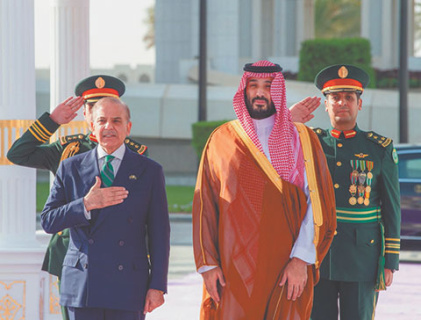
Saudi Arabia and Pakistan have signed a significant mutual defense agreement, stipulating that an attack on one nation will be considered an attack on the other. This landmark pact immediately raises a critical question in a region fraught with tension: will Pakistan, a nuclear-armed state, extend its atomic shield to protect its powerful Gulf ally, potentially redrawing the strategic map of the Middle East?
The agreement, reported by The Associated Press, is said to be a direct response to a recent Israeli military strike on Qatar. This positions the new alliance as having a distinct anti-Israeli character from its inception, formed in the wake of a brief shadow war between Israel and Iran that has already heightened regional anxieties.
The alliance does not emerge from a vacuum. For years, Riyadh and Islamabad have maintained deep economic, religious, and defense ties. Speculation has long been rife that Saudi financing may have been instrumental in the development of Pakistan’s nuclear program, leading to talk of a potential Pakistani “nuclear umbrella” for the Kingdom, a concept once floated by a Pakistani diplomat. The new pact now gives these long-standing rumors a concrete, and potentially alarming, new reality.
The deal’s timing is critical, coming after a series of Israeli military operations across the region—including in Iran, Lebanon, Syria, and Yemen—following the October 2023 Hamas attacks. As the only state in the region widely acknowledged to possess nuclear weapons, Israel’s reaction is highly anticipated. Similarly, the United States, the traditional security guarantor for the Gulf states, has yet to officially comment on a pact that could challenge its long-standing influence.
While the implications are vast, the official text of the agreement, signed by Saudi Crown Prince Mohammed bin Salman and Pakistani Prime Minister Shehbaz Sharif, makes no mention of nuclear weapons. Joint statements from both capitals emphasize that the pact aims to “develop defense cooperation” and “prevent any aggression.” This careful wording stands in stark contrast to the pact’s powerful unspoken message in a volatile region.
Adding another layer of complexity, the defense deal follows a recent, China-brokered agreement between Saudi Arabia and its long-time rival, Iran, to restore diplomatic relations. This move could be interpreted as a signal to Tehran that the Saudi-Pakistani military alliance is not necessarily directed at them, but rather part of a broader Saudi strategy to forge a more independent and assertive foreign policy, diversifying its security partnerships beyond the United States.
For Pakistan, the strategic calculus is complicated by its primary geopolitical adversary, India. With a military establishment that views India as its main threat and does not rule out nuclear conflict, dedicating significant resources to a Middle Eastern conflict could be a perilous distraction. According to the Bulletin of the Atomic Scientists, Pakistan possesses approximately 170 nuclear warheads, nearly on par with India’s 172, and India’s Ministry of Foreign Affairs has stated it is closely studying the new pact’s regional and global implications.
However, some experts urge caution against overstating the nuclear dimension. Vladimir Sotnikov, a prominent regional analyst, believes the treaty is not about sharing nuclear capabilities. He suggests that in the event of an attack on Saudi Arabia, Pakistan’s contribution would likely be limited to a contingent of special forces, a move seen more as repayment for Riyadh’s substantial financial assistance than a fundamental strategic shift. This leaves the true scope of the alliance shrouded in ambiguity, hovering between a transactional military partnership and a game-changing nuclear guarantee.
